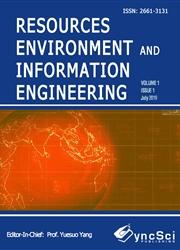Pinch analysis, as a technique for optimising resource utilisation and promoting environmental sustainability: A review of recent case studies from the developing world and transition economies
引用次数: 5
Abstract
Pinch analysis, as a technique to optimise the utilisation of resources, traces its beginnings to the 1970s in Switzerland and the UK – ETH Zurich and Leeds University to be more precise. Over four decades down the line, this methodology has entrenched itself in research circles around the world. While the technique was developed, to begin with, for energy (heat) recovery, it has since then expanded to embrace several other fields, and enabled optimisation of resource utilisation in general. The motive behind this article is to perform a focused, selective review of recent case studies from the developing world and transition economies, having ‘pinch analysis’ in their titles and thereby as their ‘core, crux and gist’, during the period 2008-2018. The resources focused on, include heat energy, electrical energy, water, solid waste, money, time, land (surface area), storage space (volume), human resources, mass of resources in general and hydrogen, while a handful of publications have their focus on carbon dioxide (greenhouse gases in general) emissions. Multi-dimensional pinch analysis promises to be an effective tool for sustainability analysis in the years to come; most importantly in the developing world where social well-being and economic development are priorities in the years ahead, and they ought to be attained by a simultaneous truncation of the environmental footprint, in other words, an optimisation of resource utilisation as well as adverse environmental impacts. In other words, the focus ought to be on sustainable production (efficiency) and consumption (sufficiency).捏点分析,作为优化资源利用和促进环境可持续性的技术:对发展中国家和转型经济体最近的案例研究的审查
捏点分析作为一种优化资源利用的技术,其起源可以追溯到20世纪70年代的瑞士和英国——更准确地说,是苏黎世联邦理工学院和利兹大学。经过40多年的发展,这种方法已经在世界各地的研究界站稳了脚跟。虽然该技术最初是用于能源(热)回收的,但从那时起,它已经扩展到其他几个领域,并实现了总体上的资源利用优化。本文背后的动机是对2008-2018年期间发展中国家和转型经济体的最新案例研究进行有针对性的、有选择性的审查,并在其标题中进行“掐点分析”,从而作为其“核心、关键和要点”。关注的资源包括热能、电能、水、固体废物、金钱、时间、土地(表面积)、存储空间(体积)、人力资源、一般的资源质量和氢气,而少数出版物则关注二氧化碳(一般的温室气体)排放。多维捏点分析有望成为未来可持续性分析的有效工具;最重要的是在发展中世界,社会福利和经济发展是未来几年的优先事项,它们应该通过同时截断环境足迹来实现,换句话说,优化资源利用以及不利的环境影响。换句话说,重点应该放在可持续生产(效率)和消费(充足)上。
本文章由计算机程序翻译,如有差异,请以英文原文为准。
求助全文
约1分钟内获得全文
求助全文

 求助内容:
求助内容: 应助结果提醒方式:
应助结果提醒方式:


